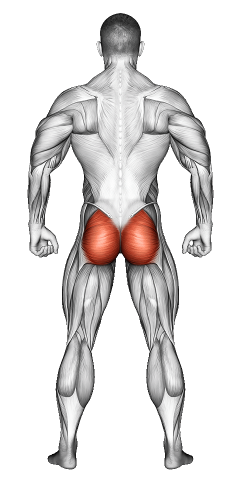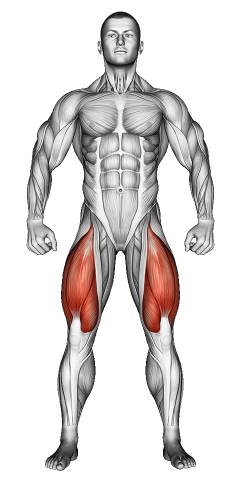Side Shuffle: Video Tutorial & Exercise Guide

Written By: Claude Michael
Updated: Oct 13, 2024
| Workout | Side Shuffle |
| Primary Muscle Group | Glutes |
| Secondary Muscle Group | Quads |
| Equipment Required | Bodyweight |
| Force Type | Push |
| Mechanics | Compound |
| Exercise Type | Cardio |
| Difficulty | Beginner |
Side Shuffle: Video Tutorial & Exercise Guide
Secondary Muscles Group
Side Shuffle: Step-by-Step Guide
- Step 1: Stand with your feet hip-width apart, knees slightly bent, and your chest up. Engage your core to maintain balance.
- Step 2: Take a step to the side with your right foot while pushing off with your left foot. Keep your body low and maintain an athletic stance.
- Step 3: Quickly bring your left foot to meet your right, staying light on your feet and continuing to shuffle sideways.
- Step 4: Continue shuffling in the same direction for the desired distance or time, then switch directions, shuffling to the left.
- Step 5: Keep your core engaged, head up, and maintain smooth, quick movements throughout the exercise.
Side Shuffle: Overview
The side shuffle is a dynamic agility exercise that strengthens your legs, improves lateral movement, and increases heart rate. It's a simple yet effective cardio move, often used in sports and conditioning programs to enhance speed and agility. whether you're an athlete or just looking for a full-body workout, the side shuffle will help improve coordination and balance.
Side Shuffles: Benefits
Side shuffles are a fantastic way to build strength in your legs, specifically targeting the quads, glutes, and calves. They also improve agility and quick footwork, making them ideal for athletes who rely on lateral movements. Additionally, side shuffles engage your core, improve coordination, and serve as an effective cardio exercise, raising your heart rate and burning calories.
Side Shuffles: Pro Tips & Advanced Techniques
Form focus: Stay low throughout the movement to fully engage your leg muscles and maintain balance. Keep your chest up and avoid rounding your back.
Speed control: Start at a moderate pace and increase speed as you become more comfortable with the movement, ensuring you maintain control.
Added intensity: To increase difficulty, use a resistance band around your thighs or ankles, or hold a light weight at chest level to engage your core further.
Side Shuffles: Progression Plan
Beginner
Intermediate
Advanced
Side Shuffle: Frequently Asked Questions (FAQs)
What muscles do side shuffles target?
+Side shuffles primarily target the quads, glutes, hamstrings, and calves. They also engage the core and help improve lateral movement.
Can I add resistance to side shuffles?
+Yes! You can add resistance bands around your thighs or ankles to increase the difficulty and target your glutes more.
How often should I do side shuffles?
+Include side shuffles 1-2 times a week as part of your cardio or agility workouts to improve lateral movement and coordination.
What common mistakes should I avoid?
+Avoid standing too upright or crossing your feet while shuffling. Stay low, keep your core tight, and make sure your steps are quick and controlled.
Share
Don’t Wish for It, Work for It – Join the FlexXP Newsletter Today!
Thank you for signing up for the FlexXP Newsletter!
This site is protected and the Google Privacy Policy and Terms of Service apply.

